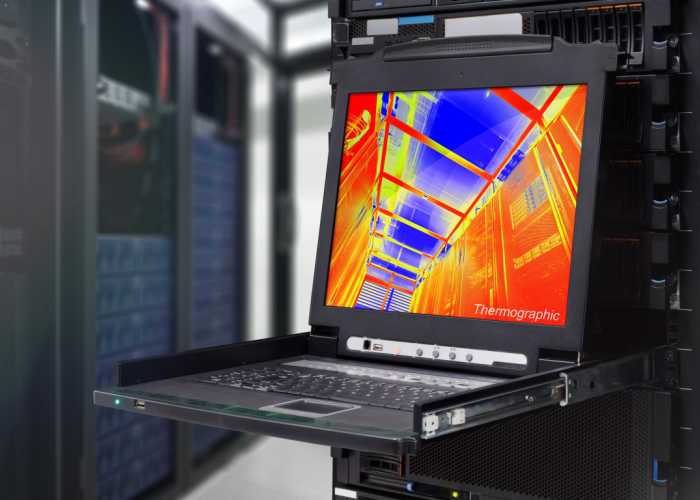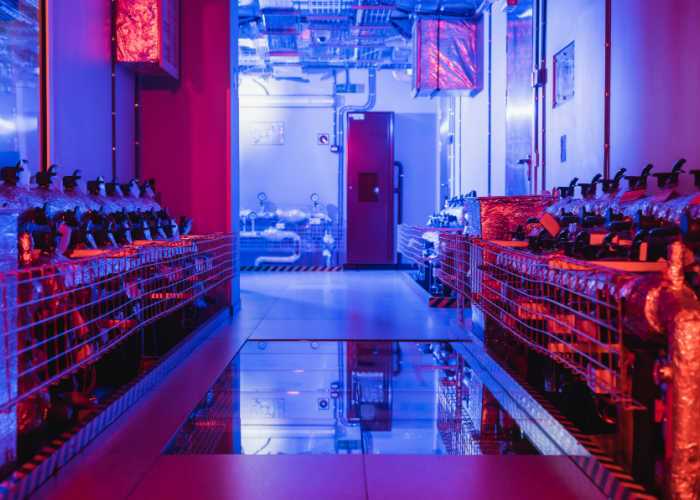Data centres have become essential to modern life, used to store and process the vast amounts of digital information we use on a daily basis. However, the high-powered equipment they house generates a lot of heat, making temperature and humidity control critical .
Without proper climate control, a data centre can experience equipment failure, downtime, and data loss. In addition, high temperatures can accelerate the ageing of equipment, increase energy consumption, and lead to higher maintenance costs, while low temperatures can cause condensation and corrosion, damaging sensitive equipment and compromising data integrity.
Read on to learn more about the options available to you, and how to choose the right cooling system for your facility.
The requirements for data centre cooling can vary depending on factors such as the size of the data centre, the number and type of servers and other equipment housed, its location, and the specific needs of the business or organisation that operates it.
However, there are some general cooling requirements that are common across the board:

Temperature: the recommended temperature range for data centres is between 18°C and 27°C. Maintaining a consistent temperature within this range helps to ensure that equipment operates optimally and reduces the risk of failures.
Humidity: the recommended relative humidity range for data centres is between 40% and 60%. This helps to prevent static electricity build-up and corrosion of equipment.
Airflow: good airflow management is crucial in data centres to ensure that equipment is properly cooled. This includes using hot and cold aisles to separate hot and cool air and managing air distribution to prevent hot spots.
Redundancy: data centres often have redundant cooling systems to ensure that if one system fails, another can take over without causing equipment damage.
Energy efficiency: data centres consume a significant amount of energy, so it’s important to use cooling systems that are energy efficient. This can include using free cooling methods when possible, and using cooling systems that are designed to operate at higher temperatures.
There are several types of cooling systems used in data centres, each with its own advantages and disadvantages.
ACUs are one of the most commonly used cooling systems in data centres. They work by removing heat from the air inside the data centre and expelling it outside. ACUs use compressors and refrigerants to cool the air, and can be either air-cooled or water-cooled. Air-cooled ACUs are easier to install and maintain, but are less energy efficient than water-cooled ACUs.
Chilled water systems use a chilled water loop to cool the data centre. The chilled water is circulated through pipes, and heat is removed from the air by passing it over the pipes. Chilled water systems are more energy efficient than ACUs, but they require a larger upfront investment and more maintenance.
DX cooling systems work by using refrigerant to directly cool the air inside the data centre. The refrigerant is pumped through a coil, and the air is cooled as it passes over the coil. DX cooling systems are energy efficient and have a lower upfront cost than chilled water systems, but they are not as scalable and can be more difficult to maintain.
Evaporative cooling systems work by using water to cool the air inside the data centre. Water is evaporated into the air, which lowers the temperature. Evaporative cooling systems are energy efficient and have a lower upfront cost than other cooling systems, but are less commonly used in the UK due to the cooler climate.
Free cooling systems use outside air to cool the data centre when the outdoor temperature is lower than the indoor temperature. This is typically done using air-side or water-side economizers. Free cooling systems are highly energy efficient and can significantly reduce energy costs, but they are only effective in certain climates.

Choosing the right type of cooling system for a data centre is a critical decision that can impact the efficiency, reliability, and cost-effectiveness of the facility.
Here are some key steps to follow when making your decision:
Determine the heat load: the first step in choosing a cooling system is to calculate the amount of heat generated by the IT equipment in the data centre. This will help you determine the cooling capacity required for the facility.
Evaluate the available options: as we’ve seen, there are several types of cooling systems available, such as air-cooled, water-cooled, and DX systems. Hybrid systems are also available. Each type has its advantages and disadvantages, and it is important to evaluate them based on your specific requirements.
Consider energy efficiency: cooling systems can account for a significant portion of a data centre's energy consumption. It’s important to choose a system that’s energy efficient, as this can lead to significant cost savings over the long term.
Analyse the local climate: the climate in the UK can vary widely, and this can impact the performance of different cooling systems. For example, air-cooled systems may be more effective in cooler climates, while water-cooled systems may be better suited to warmer environments.
Plan for redundancy: a data centre cooling system is a critical component of the facility's infrastructure, so it’s important to plan for redundancy in case of equipment failure or maintenance downtime.
Factor in costs: the cost of a cooling system can vary depending on the type of system, its capacity, and the complexity of the installation. It’s important to factor in not only the upfront costs but also the ongoing operating costs, such as energy consumption, maintenance, and repairs. A cost-benefit analysis can help determine the most cost effective option over the long term.
Consider maintenance requirements: cooling systems require regular maintenance to ensure optimal performance and to prevent equipment failures. Some systems may require more frequent maintenance or more specialised expertise, which can impact the overall cost of ownership.
Seek expert advice: choosing the right cooling system for a data centre can be complex, so it's highly advisable to seek advice from experts in the field. A professional data centre cooling specialist can help you evaluate your options and make an informed decision based on your specific needs and requirements.
